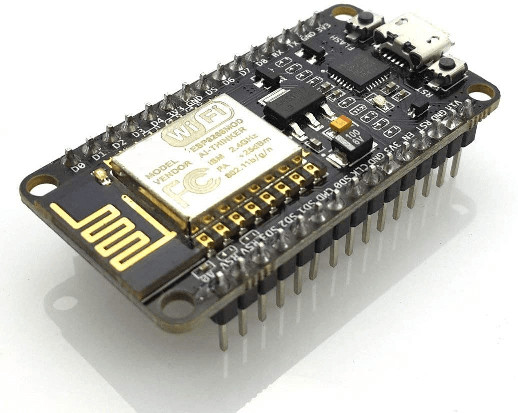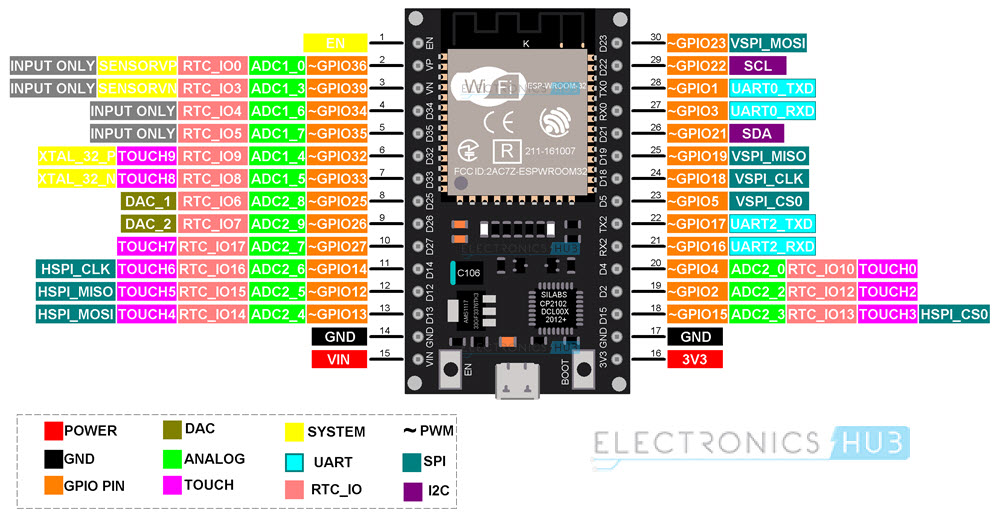The two low-cost microcontrollers commonly used as IoT devices. Both functions to interact with other IoT platforms. The two devices are very important tools of IoT but naturally have their own function and flaws. Today, in this article we will discuss the two popular microcontrollers.
What is ESP32?
ESP32 is a series of low-cost power systems on a chip microcontroller. The ESP32 is an advanced version of the ESP8266 series. The ESP32 series is created and developed by Espressif Systems. The ESP32 have dual-core and Ultra low power co-processor. It was developed for the lack of security, which was in ESP8266 Pros:
ESP32 offers you dual-core 160MHZ to 240MHZ You can control and monitor your device with the help of Wi-fi or Bluetooth at a very low price. ESP32 offers you more GPIOs ESP32 gives you a high speed of 150Mbps.
Cons:
ESP32 is more expensive than the ESP8266
What is ESP8266?
The ESP8266 is a complete or self-contained system on a chip (SOC) circuit, Wifi module with IP/TCP protocol stack. The ESP8266 gives access to any microcontroller through your Wifi connection. One of the main functions of ESP8266 is to host any application or offloading all Wifi networking functions. It is highly durable and is able to function consistently even in harsh industrial environments. This is only because of its broad range of the operating temperature. It also offers an energy-saving architecture and a Tensilica processor of 32-bit. Pros:
ESP8266 Module gives you powerful onboard processing and storage capability, which allows it to integrate with sensors and other applications. It has a high level of on-chip integration. The on-chip integration allows the user for very less external refer circuitry. The ESP8266 goes with APSD for the Bluetooth and VoIP applications coexistence interfaces. It also contains a self-calibrated radio frequency (RF) that allows it to work with all the conditions of operating and does not require any radio frequency parts.
Cons:
ESP8266 does not have Bluetooth connectivity, whereas in ESP32 you can use this feature. The GPIO is very less in ESP8266 compared to ESP32.
Comparison Table Between ESP32 vs ESP8266
ESP8266 vs ESP32: What’s the difference?
ESP8266
The ESP8266 is a Wi-fi SoC, which has all the important components a user will need for a functional Wi-Fi device. The ESP8266 is a low-cost Wi-fi enabled microchip, which you can add for wireless connectivity for any microcontroller. The ESP8266 is an integrated circuit with 16 GPIO pins and different peripherals like Serial peripherals interface, Integrated circuit protocol, Analog to digital converter. The ESP8266 has no ethernet and touch sensor. It does not have remote control access and lacks security. The ESP8266 does not have a crypto or temperature sensor.
ESP32
The ESP32 is an upgrade of ESP8266 and it has 34 GPIO pins with Xtensa dual-core processor 160MHZ. The ESP32 has a 32-bit processor with an ultra low power co-processor and multiple input/output connectors, which includes digital-to-analog converters. The ESP32 has a secure platform for the Internet of Things. The ESP32 gives you remote control access and a temperature sensor. The ESP32 offers you the security of Secure boot flash encryption 1024 – bit OTP with PWM (soft) 16. The ESP32 has ten touch sensors.
Which is better, the ESP32 vs ESP8266?
The ESP32 is better than ESP8266. It provides you with a faster processor and good memory size, which allow considerable larger projects to be designed on only one SOC. ESP32 provides you with reliable and hi-tech security. The strong security feature is a speciality of ESP32. The ESP32 have reliable board, firmware, and peripherals. The processing power also creates secure socket layer connections and great essential requirements in the world of IoT. ESP32 devices have more GPIO to work with more useable and complicated projects. It is a better suited for every situation where an application needs a microcontroller. Many ESP32 development boards come with small cameras and it is said to be a very capable board. The ESP32 development has power, which allows better security and larger RAM for projects, which you cannot run in ESP8266.
What is this IoT’s module good for?
The module of ESP8266 has a capacity to read, process data, and control GPIOs. It comes with a 2.4GHz Wifi in the 802.11 BGN variant and also supports WPA2 encryption. It has many applications, some of them are listed below:
Efficiently using its feature of data processing to read both digital and analog signals from sensors. Some other usage is in reading complex calculations of adders or multipliers to any other driver algorithm. This module is useful to connect to any network in the vicinity. It can also be used to simply create a very own P2P network. Optimizing the usage of Wifi is helpful in transmitting data wirelessly to a nearby router. Even in absence of a P2P network or a smartphone, the connection between two ESPs can be established directly.
Which are its applications? How can I run it?
Understanding the usage of the IoT module helps us determine the area in which its true potential can be extracted. Some of the areas for which its module is essential are:
Using WiFi to triangulate a location. Automated outlets in various stores and workshops. Industrial security in home and business sectors. Wireless monitoring CCTV cameras and sensors that feed data. In the field of robotics for both academic and professional purposes.
After learning the applications, some of you might want to get your hands on with this amazing module. To use the module of ESP8266 with Arduino, follow the below-mentioned steps: Step1: Connect the specified module to your PC. Step 2: Launch the Arduino IDE Step 3: Navigate to “File” and then select “Preferences”. Step 4: Add the link shown to Additional Board Manager. Step 5: Find “Tools” and then click on Board Manager. Step 6: Locate the ESP8266 module and click on it to activate it.
Conclusion
It can be inferred that both the ESP32 and the ESP8266 are amazing toolkits. Sometimes one is preferred over the other when it comes to certain elements in question. The ESP8266 has a lower current consumption than that of its competitor however one has more digital pins than the other. Hence you should choose the variant you are in need of. Hope this article will give you some useful information. Comment * Name * Email * Website
Δ









![]()